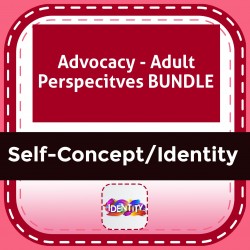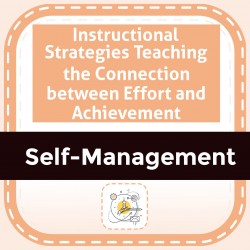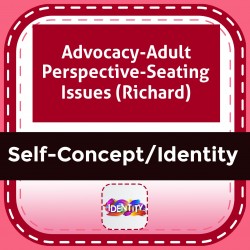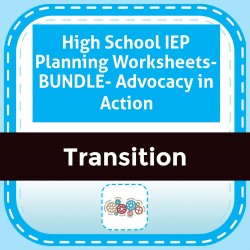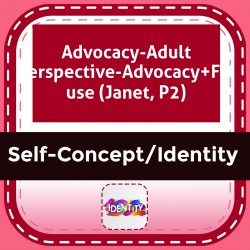Ability Levels
Categories
Resource Types
Age/Grade Range
CCSS
Anchor Standard
Speaking & Listening
Language
Reading
Advocacy in Action Lower Elementary Handouts BUNDLE
$ 595
Worksheet for entire Lower Elementary Advocacy in Action curriculum. There are 28 worksheets covering topics such as amplification (hearing aid, cochlear implant, FM system), listening environments a
...
nd social awareness situations. Bundle IDs 0480-0501
Super Kena - A Girl Made Fierce with Hearing Aids
$ 995
“Super Kena – A Girl Made Fierce with Hearing Aids” is meant to empower children with hearing aids like Kena but also other “differently-abled” children who get teased and only want to fit in.The book
...
fit in.The book touches on children with glasses, with diabetes, who stutter, who have food allergies, with asthma, and who are in wheelchairs. Together they use their unique super powers to make a difference in the world by spreading understanding and acceptance . . . one classroom at a timeNOTE!!How to read Open EPUB or Open PDF e-books on a computer:Download the free Adobe Digital Editions: https://www.adobe.com/solutions/ebook/digital-editions/download.htmlOpen Adobe Digital Editions (ADE) on your Windows or Mac computer.Go to File > Add to Library.Find the saved EPUB or PDF file on your computer. By default, files are saved to your computer's "Downloads" folder.Double-click an e-book to start reading, or follow these steps to transfer it to an e-reader.Under top menu ‘Reading,’ select Double Page View
Advocacy - Adult Perspectives BUNDLE
$ 6
This bundle exposes older student to how self-advocacy differ from school to adult life. Topics range from advocating in the classroom, accepting one's hearing loss, working with infelxible teachers,
...
to understanding of accomodations. These articles encourage discussion, problem-solving, and critical thinking with advanced learners. Collected IDs in the Bundle: S0XADV0721, S0XADV0722, S0XADV0723, S0XADV0724, S0XADV0725, S0XADV0726, S0XADV0727, S0XADV0728.
Instructional Strategies Teaching the Connection between Effort and Achievement
$ 295
Teach the connection between effort and achievement with these activities designed to help students understand the importance of effort and how it can directly correlate to their success. See BUNDLE a
...
t S0XTEA0815.
Recognizing My Strengths and Needs - Advocacy in Action
$ 1
Worksheet for students in which they list their strengths and their needs.
Living Accommodations - Advocacy in Action
$ 1
Worksheet in which students describe challenges they may face in their post-high school living environment, accommodations to overcome the challenges, and documentation needed to request the accommoda
...
tions.
Advocacy-Adult Perspective-Seating Issues (Richard)
$ 2
Expose older students to how self-advocacy skills differ from school to adult life. Students are given an article written by an adult with hearing loss. Encourage discussion and forward-thinking with
...
this activity. This article addresses seating issues for persons with a unilateral hearing loss and the importance of appropriate seating for all students with hearing loss. See BUNDLE at S0XSCI729.
High School IEP Planning Worksheets- BUNDLE- Advocacy in Action
$ 095
BUNDLE - Worksheets for high school level instruction on the IEP process. There are 3 worksheets that will walk a student through activily participating in their IEP. Worksheets include: What is an I
...
EP?, Recognizing My Strengths and Needs, and Planning for Transition Services. Bundle IDs 0532-0534.
Advocacy - Steps to SA Success Goal 8- Accommodation Access
$ 3
The ability to successfully advocate for needs related to hearing requires an ability to recognize different types of support and how to access them. Competency in other areas is required before this
...
goal can be addressed. Students will rate photos of situations according to ease of listening and analyze situations for ways to improve communication and access.
Advocacy-Adult Perspective-Advocacy+FM use (Janet, P2)
$ 2
Expose older students to how self-advocacy skills different from school to adult life. Students are given an article written by an adult with hearing loss. Encourage discussion and forward-thinking wi
...
th this activity. This article addresses the advantages of using an FM system in adult situations. See BUNDLE at S0XSCI729.
 Your browser is out of date. For best experience switch to latest updated Browser.
Your browser is out of date. For best experience switch to latest updated Browser.
 Get Chrome
Get Chrome Get Edge
Get Edge Get Firefox
Get Firefox


